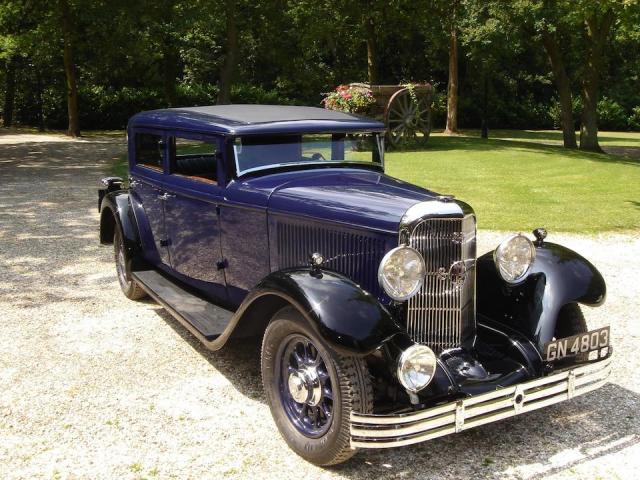1931 Panhard et Levassor 3.5-Litre SS
- Brand: Panhard et Levassor
1931 Panhard et Levassor 3.5-Litre SS Special Saloon Coachwork by Bionier
René Panhard was an engineer whose business, based in Paris, made woodworking tools and built engines under license. With his partner, Emile Levassor, he experimented with horseless carriages using engines licensed from Daimler. In 1891, Panhard et Levassor offered for sale what was arguably the world’s first production car, using a Daimler engine. Above all, the firm was responsible for bequeathing the automobile world with Systeme Panhard, which embodied the now familiar layout of a front mounted engine driving a rear axle via a clutch, gearbox and differential. The modern motor car had been born.
Panhard et Levassor quickly established a reputation for fine engineering, excellent craftsmanship, superior reliability and outstanding performance. A Panhard travelled from Paris to Versailles and then on to Etretat in 1892 with no serious mechanical difficulties, while another won the Paris-Bordeaux-Paris race in 1895, further cementing the marque’s reputation for excellence.
The first decade of the 20th Century saw Panhard et Levassor forge ahead in automobile design with mechanical inlet valves standard by 1904 and giant multi-cylinder cars being marketed in 1905 and 1906. While not neglecting the smaller models, Panhard et Levassor were clearly aiming their products at exactly the same quality of clientele that Rolls-Royce, Napier and Lanchester were cultivating in England.
1911 was a landmark year for Panhard et Levassor, seeing the introduction to their range of the Knight double sleeve valve engine, and this type of power unit would characterise the firm’s larger offerings well into the 1930s. It appeared first on the 4.4-litre 25hp model, the X14, which featured four cylinders cast separately and a most practical four-speed gearbox with a choice of chain or shaft final drive. Smooth and silent, if a little smoky, the Knight engine placed Panhard in the same league as Daimler in the UK, although Panhard’s light steel sleeves gave better performance. Panhard built its first sleeve valve six in 1927 but few cars of any kind during the mid-1930s. Then, for 1937, the firm introduced the startlingly styled Dynamique, a sleeve valve six built in capacities of 2.5, 2.7 and 3.5 litres, but after WW2 reinvented itself as the maker of small-capacity cars of utilitarian appearance but exceptional performance.
First registered on 7th February 1931, this six-cylinder Panhard et Levassor features right-hand drive and has been in the UK since new. Reputed to be the car that was entered in the Louis Vuitton Concours in 1932, it boasts ‘Art Deco’ styled coachwork typical of the period, with gold-plated door handles and instrument panel. An accompanying photograph depicts Mme Bionier, the wife of the coachbuilder, Louis Bionier, with the new car.
Descriptions & pictures by bonhams
| Specification | |
| Production Start | 1931 |
| Country of origin | France |



















